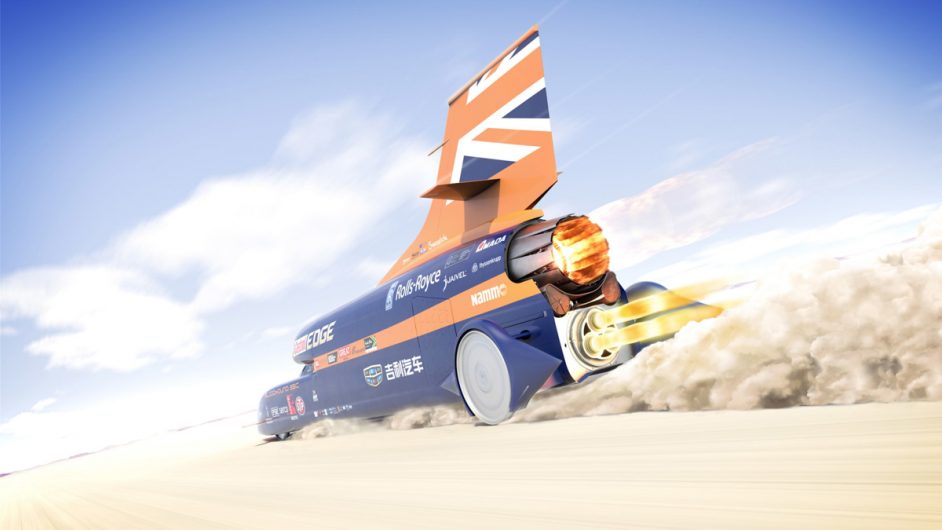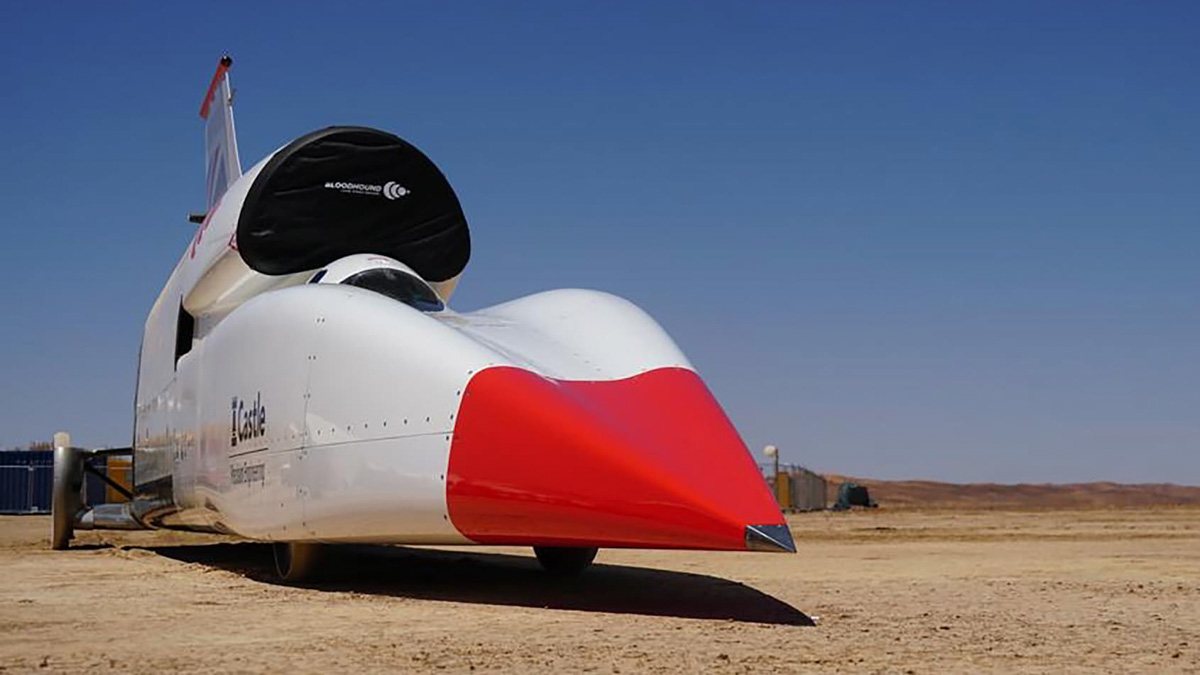The Bloodhound LSR has finally touched down on South African sand, revealing its final livery in the process
One could say that the Bloodhound project has had its fair share of ups and downs, almost coming to a complete close late last year when funds ran dry. Despite initial fears, over a decade of work was saved by British entrepreneur Ian Warhurst, acquiring the project for an undisclosed sum in efforts to keep the 1610kph dream alive. This week, it touched down in South Africa where it will undergo further testing.
This is the very first time the car has been seen with its machined solid aluminium wheels, designed to withstand supersonic speeds in the record attempt in 12-18 months’ time. Upcoming tests will take the Bloodhound to 800kph+, taking data from hundreds of sensors to analyse performance and stability, whilst also assessing its ability to slow down – AP Racing wheel brakes, one or both drag parachutes and its air brakes will all be put to the test.
Until today, the Bloodhound LSR (previously titled SSC) has travelled little more than a few kilometres up and down the Newquay International Airport runway, achieving a speed of just over 322kph – any faster and it wouldn’t have stopped before reaching the end, and its relatively standard rubber tyres would’ve given out.

Bloodhound LSR engineering director, Mark Chapman, said: ‘Newquay was all about getting up to speed and finding out how quickly we could get the engine to full power and accelerate using max reheat. Andy [Green] was on the throttle for two seconds to reach 322kph in eight seconds. Here at the Hakskeenpan on a 16km track we can accelerate for much longer, achieve higher speeds and investigate the car’s stability, performance and drag, all crucial as we move towards setting a new world land speed record.’
Powering the machine is a Rolls-Royce EJ200 jet engine from a Eurofighter Typhoon, alongside an additional cluster of rockets to help it reach the magic 1610kph. Such a figure would eclipse the 1227.9 kph record set by Thrust SSC by quite some margin, firing it across the desert at 447 metres per second – that’s enough to travel the length of a football field in 0.234sec, and the entire length of Wales (273 kilometres) in just 10 minutes.
Despite the cutting-edge tech, current plans have a 560bhp Jaguar V8 at the heart of LSR. Pumping fuel to the jet engine requires rather a lot of power, meaning such an engine is the natural, cheapest place to turn – hopes are to replace this with a more space-efficient electric motor and batteries, technology that didn’t exist when the project began a decade ago.
This article originally appeared at evo.co.uk
Copyright © evo UK, Dennis Publishing

